Macro photography is the art of capturing small objects or details with great precision and detail.
It is a popular genre among photographers who want to showcase the beauty of the miniature world around us.
To achieve the best results, a high-quality macro camera is essential.
The market is flooded with cameras that claim to be great for macro photography, but not all of them live up to the hype.
When it comes to selecting the best camera for macro photography, there are several factors to consider.
These include the sensor size, resolution, autofocus speed, image stabilization and most importantly, the macro lens.
Cameras from leading brands are well-known for their exceptional macro capabilities.
However, not every camera that claims to be great for macro is equal.
There are many forms of macro photography but as a lover of the great outdoors, my own macro photography is typically nature-based.
I have been exploring the camera world to find the best camera for macro photography.
Through my research, I have discovered some of the best cameras for macro photography currently available in the market.
Finding the best camera for macro photography can be an exhausting task.
If you are in the market for the best camera for macro photography, you’ve come to the right place.
I have highlighted the features and benefits of each camera, along with the types of macro lenses that work best with them.
This will help you have a better understanding of what to look for in a camera for macro photography. Ultimately, it will help you make an informed decision on which camera suits your needs.
In addition, there are five incredible cameras to choose that are arguably the best cameras for macro photography.
We have found the best cameras for you to start with. So you can just start exploring macro objects. We are going to review these cameras in this article.
- Panasonic Lumix FZ80 4K
- Olympus Tough TG-6
- Sony Cyber‑Shot RX10 IV
- Nikon Coolpix W300
- Canon EOS 5D Mark IV
Best Cameras for Macro Photography – Reviews
Whilst I love to take micro shots in my garden and during my travels, I have tested these cameras in various ways.
Whether it is a birthday cake or even the radiant eyes of my pet, I’ve tried these cameras on various subjects.
You can produce great results with a 1:1 magnification ratio and these are the best cameras I have found for this.
Panasonic Lumix FZ80 – Best Camera for Macro Photography Overall
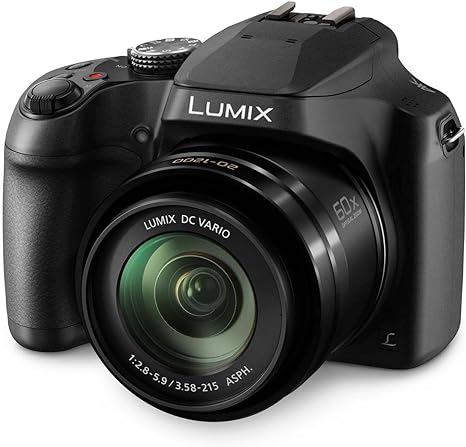
The Panasonic Lumix FZ80 is an excellent camera for macro photography.
Thanks to its 60x optical zoom lens and advanced focusing capabilities, this camera takes impressive macro shots.
With a focal length range of 20-1200mm, this camera can capture even the smallest details with great precision and clarity.
The lens also features optical image stabilization, which helps to reduce camera shake and produce sharper images.
In addition to its impressive lens, the Lumix FZ80 boasts a 18.1-megapixel high-sensitivity MOS sensor.
This delivers stunning image quality and allows for cropping and enlarging without losing detail.
The camera also has a high-speed autofocus system, which makes it easy to capture fast-moving subjects and ensures that your macro shots are always in focus.
Other notable features of the Lumix FZ80 include 4K video recording, post-focus mode and a variety of creative filters and effects.

Lens
60x Long Zoom allows you to capture breathtaking macro images.
Auto Focus
The autofocus system, branded as Lightspeed AF, has been upgraded from previous cameras in the range with the addition of Depth from Defocus (DFD) technology. This helps increase the speed and accuracy of the camera’s focusing resulting in crisp and sharps images.
Low Light Performance
Maximum native ISO of 3200 extendable up to 6400. Shoots great in low light conditions.
Image Stabilization
Great image stabilization. Produces smooth video of macro content.
4k Resolution
Records 4K up to 30fps. Allows you to record incredible quality video at macro.
Battery Life
Excellent battery life. You can change the removable from both in-camera as well as an external charger.
Overall, the Lumix FZ80 is an excellent choice for anyone looking for a versatile and powerful camera for macro photography.
With great auto focus and an exceptional lens, the Lumix FZ80 produces magnificent images.
“I loved the Panasonic Lumix FZ80 for my own macro photography. I found it light and easy to carry making it perfect for shooting on the go.”
Olympus Tough TG-6 – Best Camera for Macro Photography for Beginners
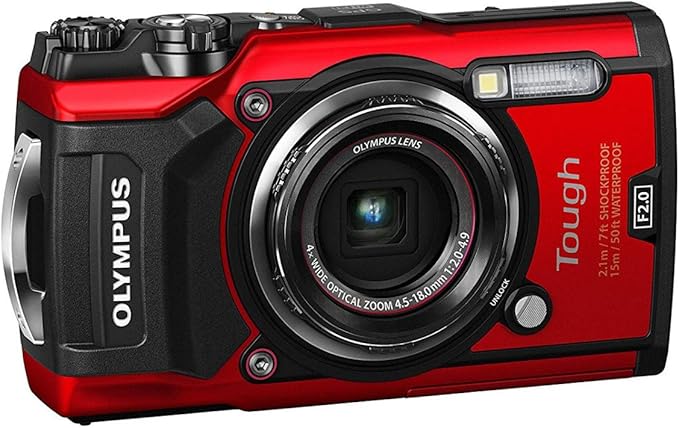
The Olympus Tough TG-6 is an exceptional camera for macrophotography, particularly for those who enjoy exploring underwater environments.
Its rugged, waterproof design allows you to take it to places that other cameras simply cannot go, making it a popular choice for adventurers and nature enthusiasts.
One of the standout features of the TG-6 is its advanced macro mode, which allows you to capture incredibly detailed close-up shots of subjects as small as a grain of sand.
With a minimum focusing distance of just 1cm, this camera can capture every intricate detail of your subject, whether it’s a tiny insect or a vibrant coral reef.
The TG-6 also boasts a range of advanced features that make it easy to get great macro shots.
These include a powerful image stabilization system, an adjustable LED ring light and a variety of shooting modes and creative filters.
And with 12 megapixels of resolution and the ability to shoot 4K video, you can be sure that your macro shots will be sharp, vibrant, and full of detail.
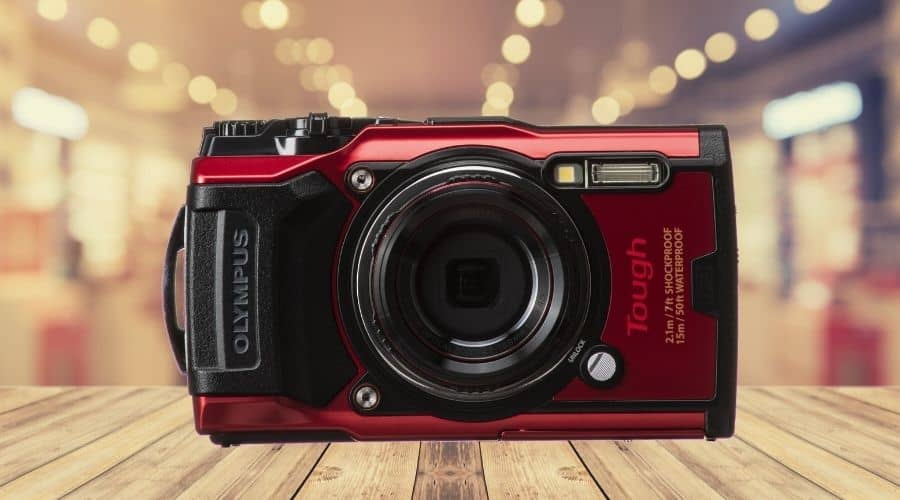
Lens
Can shoot a picture at a distance of 1cm from the end of the lens. 5 modes are also available for underwater microscopes.
Auto Focus
Auto focus is speedy but basic and automatically focuses the center of the screen.
Low Light Performance
This camera is the best of the five for low light performance. It shoots incredibly in most lighting conditions, even the depths of under water. In addition to the dedicated underwater camera modes, the Tough TG-6 also has three modes for white balance.
Image Stabilization
This camera has great image stabilization but doesn’t work when recording in slow motion unfortunately.
4k Resolution
Can shoot 4K movies at up to 120 fps which produces great macro videos.
Battery Life
Average battery life. It can last up to 300 photos.
This camera is exceptional for underwater photography and allows you to get close up macro shots below the surface.
It is also tough and durable allowing you to capture high quality macro photography in any situation.
“Boasting great low light performance, this is a serious contender for the best camera for macro photography. In addition, the Olympus Tough TG-6 is incredibly user-friendly and is a top choice for beginners.”
Sony CyberShot RX10 IV – Best Camera for Macro Photography for Macro Lens

The Sony CyberShot RX10 IV is a great camera for macro photography for many reasons, one of which is its incredible zoom capabilities.
The RX10 IV features a 25x optical zoom lens.
This allows users to capture macro images with ease without the need to carry extra lenses.
With no need for additional lenses, the RX10 IV is easy to carry around and handle, making it perfect for outdoor macro photography.
It also has an impressive autofocus system that can track subjects with speed and accuracy.
Additionally, this is a great slow motion camera and can shoot 4K video at up to 960 frames per second.
However, I was really disappointed by the low light performance on this camera. It pretty much just does not perform in low light.
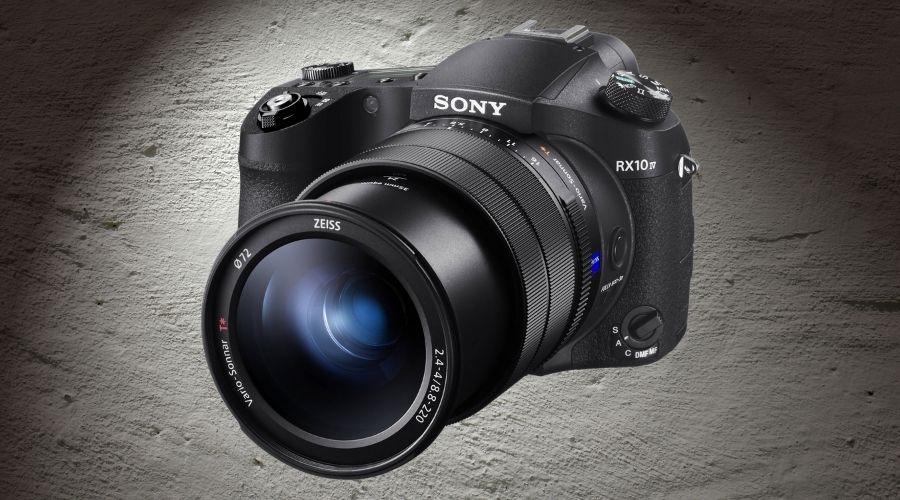
Lens
28-600mm zoom captures crisp, clear macro stills without the need for additional lenses.
Auto Focus
Auto focus works extremely well on the RX10 IV for both still images and video. Has lock-on auto focus that tracks the subject.
Low Light Performance
ISO range of 100-12800 with exposure compensation of +/- 3.0EV. Low light performance is a disappointment of the RX10 IV. Video quality is poor in difficult lighting conditions.
Image Stabilization
Great image stabilization with four SteadyShot modes.
4k Resolution
4k recording from 24-960 fps provides excellent resolution for standard shooting and extreme slow motion.
Battery Life
Continuous shooting up to 135 minutes or up to 400 still shots per single charge.
In conclusion, the Sony CyberShot RX10 IV’s highlight is its in-built incredible zoom capability.
Without additional lenses, its easy portability and maneuverability allow for greater flexibility in shooting angles and positions.
This is a great camera for out and about without the need for different lenses.
“The Sony CyberShot RX10 IV is a great camera for out and about without the need for different lenses.”
Nikon Coolpix W300 – Best Camera for Macro Photography for Affordability
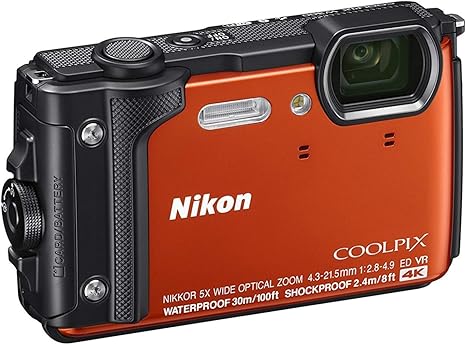
The Nikon W300 is a great camera for macro photography for a few reasons.
First and foremost, it has a 16-megapixel CMOS sensor that can capture incredibly detailed images of small subjects.
Additionally, the camera has a 5x optical zoom lens that can get you up close and personal with your subject without compromising image quality.
This is particularly useful for macro photography, where getting a detailed shot of a small subject can be challenging.
Another great feature of the Nikon Coolpix W300 is its rugged construction.
It is waterproof, shockproof, and freeze-proof, making it perfect for outdoor adventures and getting close to nature.
This means that you can take the camera with you on hikes and other outdoor activities without worrying about damaging it.
Finally, the Nikon W300 has a variety of advanced features that can help you get the perfect shot, including built-in GPS and Wi-Fi connectivity. These features make it easy to share your photos and keep track of where you took them.
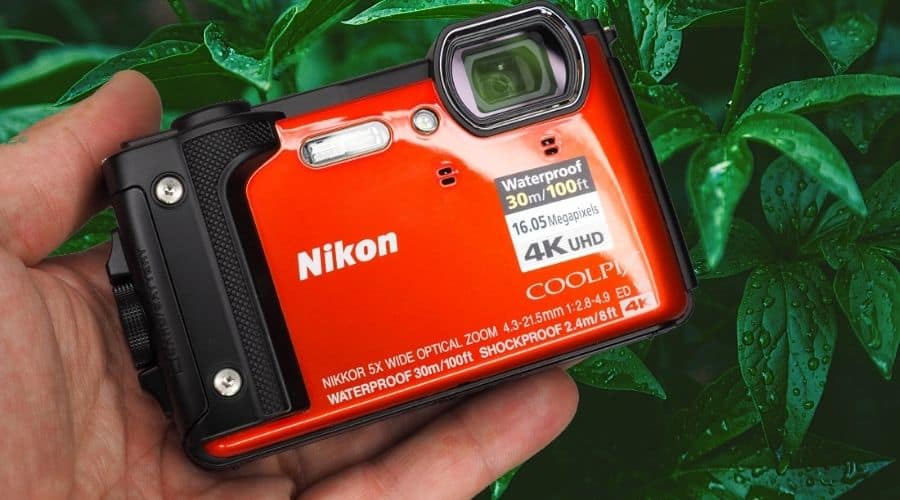
Lens
5x optical zoom plus various shooting modes including close-up.
Auto Focus
Features an adjustable auto focus with two focusing modes. Produces detailed images and videos with minimal blur.
Low Light Performance
Great low light performance for a point and shoot camera. Features multiple shooting modes including sunrise, sunset and night landscape settings.
Image Stabilization
Features a hybrid lens shift and vibration reduction to stabilize the image. This creates smooth footage and crisp images.
4k Resolution
Great 4K resolution. Shoots incredible quality video for its price point.
Battery Life
Average battery life lasting up to 400 shots per single charge.
All of these features make the Nikon W300 an excellent choice for anyone who wants to take high-quality macro photos.
It is a great option for underwater photography with a 5x optical zoom and waterproof up to 18m.
A great macro photographer for this price range, I found the Coolpix W300 to be the most affordable of the five cameras.
Offering exceptional image quality and great features for a brilliant price tag, I think this camera is incredible value for money.
“The Sony CyberShot RX10 IV is a great camera for out and about without the need for different lenses.”
Canon EOS 5D Mark IV – Best Camera for Macro Photography for Most Features
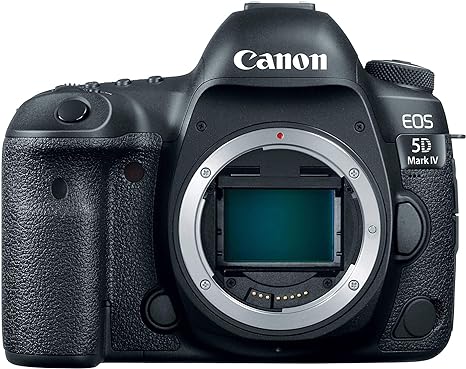
The Canon EOS 5D Mark IV is one of the most impressive cameras for macro photography.
Firstly, it has a full-frame 30.4-megapixel CMOS sensor that can capture stunningly detailed images with incredible clarity and resolution.
The camera’s high resolution sensor also allows for more significant crops while maintaining image quality, making it easier to zoom in on the fine details of your subject.
Another feature that makes the Canon EOS 5D Mark IV an excellent camera for macro photography is its Dual Pixel RAW functionality.
This feature allows you to fine-tune the focus of your images in post-processing, making it easier to capture perfectly focused shots of small subjects.
The camera’s advanced autofocus system is also a significant advantage for macro photography.
Its 61-point AF system allows you to track and focus on your subject precisely, even when it’s moving.
This is great for close-ups in nature.
Lastly, the Canon EOS 5D Mark IV has a rugged, weather-sealed body that makes it ideal for outdoor macro photography.
The camera’s durable construction means you can take it with you on all your adventures, regardless of the weather or terrain.
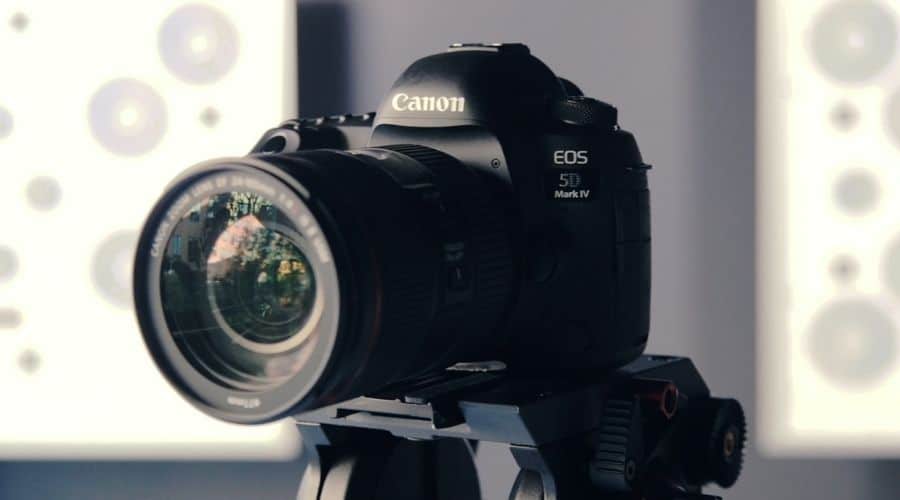
Lens
Requires additional lenses. Compatible with Canon’s impressive range of lenses including the EF 85mm which is a firm favorite with macro photographers.
Auto Focus
This camera has advanced autofocus technology allowing it to capture moments instantly without any focusing delays. The 61-point autofocus system is simply incredible.
Low Light Performance
Native ISO of 100-1600 with an expanded ISO of 50-3200. The dynamic range is great and shadows can easily be brightened.
Image Stabilization
This camera does not have built-in image stabilization. However, it is compatible with Canon’s extensive range of lenses, many of which feature image stabilization.
4k Resolution
Captures stunning 4k videos. Works well with lenses to create high quality macro footage.
Battery Life
Up to 850 photos. I found my EOS 5D to last 3-4 hours of shooting.
The Canon EOS 5D Mark IV is an excellent camera for macro photography and was probably my second favorite of the five.
One thing I loved about it is the variety of options for macro photography with the great selection of interchangeable lenses.
The only thing I didn’t like about this camera is that the file size is really large.
However, this won’t be an issue to all.
“With a great range of features, I think the Canon EOS 5D Mark IV is a perfect choice for anyone looking to capture stunning macro images.”
How to Buy the Best Camera for Macro Photography
Macro photography is a whole new realm of photography.
The elements you would look for in a traditional camera do not necessarily make it great for macro photography.
If you’re in the market for macro photography, you’ll want to consider the following features.
Lens
The lens is possibly the most crucial feature of a camera for macro photography.
This is because it determines how close you can get to your subject and how sharp the image will be.
A lens with a high magnification ratio allows you to get closer to your subject, capturing fine details and producing sharper images.
Cameras with optical zoom lenses are great for macro photography as they allow you to zoom in on your subject and maintain image quality without the need for interchangeable lenses.
On the other hand, cameras with interchangeable lenses give you more control over the magnification ratio.
They enable you to use dedicated macro lenses, which are specifically designed for close-up photography, producing even sharper and more detailed images.
Beginners to macro photography will find cameras with incredible optical zoom perfect.
However, professionals may prefer the options a DSLR or mirrorless camera can offer.
Auto Focus
The auto-focus feature of a camera is essential for macro photography because it allows you to achieve precise focus on small, detailed subjects.
Macro photography often involves capturing subjects that are very close to the camera, making it challenging to achieve proper focus manually.
Auto-focus helps you to achieve sharp and detailed images of small subjects with ease.
It also makes it easier to track moving subjects, ensuring that you get the perfect shot every time.
Selecting a camera with good auto focus is important for macro photography.
Whether you’re a professional or an amateur photographer, having reliable auto-focus is crucial for capturing stunning macro images.
Low Light Performance
When it comes to low light performance, not all cameras are created equal.
Good low light performance is an important feature of a camera for macro photography.
This is because macro shots often require a shallow depth of field to isolate the subject and create a beautiful bokeh effect.
A wider aperture is necessary to achieve this effect, and in low light conditions, a camera with good low light performance will enable you to use a faster shutter speed and lower ISO without sacrificing image quality.
Having good low light performance ensures that you can capture stunning macro images even in challenging lighting conditions.
Image Stabilization
Image stabilization is an essential feature of a camera for macro photography because it helps to reduce camera shake, resulting in sharper images.
When taking macro shots, even the slightest movement can cause blur, making it challenging to capture crisp and detailed images.
Image stabilization compensates for camera movement by detecting and correcting it, allowing you to take sharp macro images even when shooting handheld.
This feature is particularly useful when using longer lenses or shooting in low light conditions where slower shutter speeds are required.
Overall, image stabilization is a crucial feature that can make the difference between a blurred and a sharp macro image.
Some cameras, like the Canon EOS 5D Mark IV, do not have built-in image stabilization.
However, cameras like this are compatible with interchangeable lenses that offer this feature instead.
4k Resolution
Essential for those shooting video as well as stills, 4K resolution captures incredible high quality footage.
When it comes to macro photography, every detail matters.
4K resolution can help capture every movement and every detail close up.
Battery Life
Battery life is important no matter what type of camera you are in the market for.
It can be so frustrating when your battery dies mid-shoot.
However, when dealing with the intricacies of macro photography, having a good battery life is even more important.
Macro photography can take trial and error as well as different angles to get the perfect shot.
It can be time-consuming and a good battery life is critical.
Image Quality
Image quality doesn’t just depend on the right equipment. It also depends upon how many experiments you do to get fine and-tuned clicks.
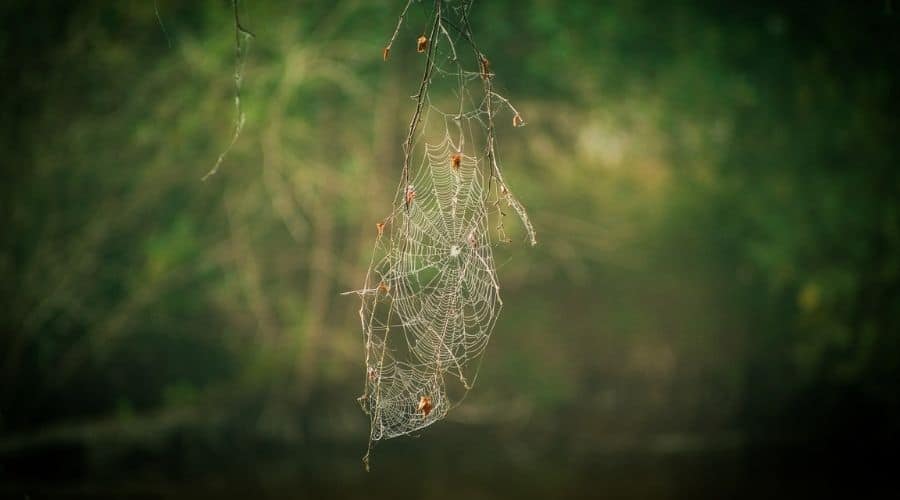
The more you capture, the sooner you’ll master the technique.
“Practice makes perfect”
Image quality can depend upon many factors:
- Background Light
- Camera Stability
- Camera Focus
- Object’s Position
Focal Length

There are 3 major focal length categories for macro lenses:
- Short (35-60mm): This lens will give a great experience as it is compact. You can shoot more than macro without changing lenses. But, bokeh mode isn’t good because of its short working distance. It’s difficult when you have to click any insects, you have to be really close to the object.
- Mid-range (90-105mm): Selecting a mid-range lens will give you a better bokeh effect over a short lens. Also, it gives you a better working distance.
- Long (150-200mm): Long lens will be costly and heavy in weight, but gives you the best bokeh effect. These lenses are longer than other ideal lenses.
Shooting Options Available
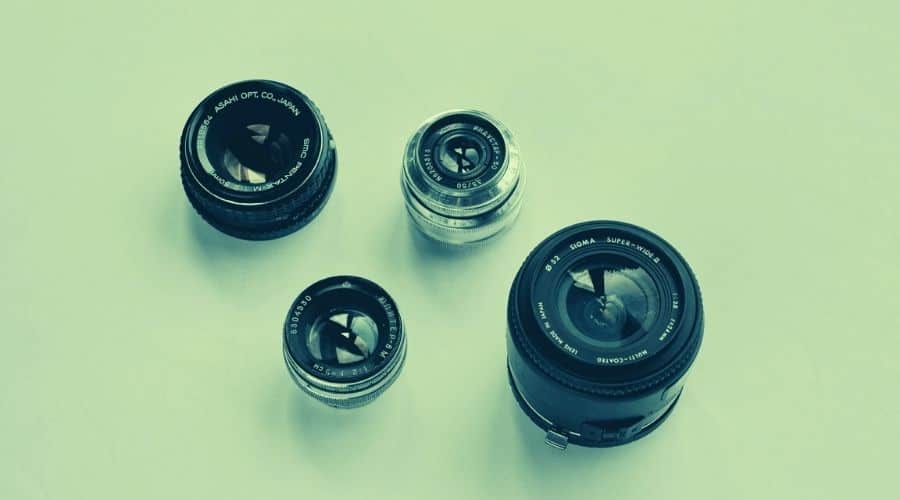
The price of macro lenses varies with the focal length. You can find lenses according to your preferred usage and focal length.
But don’t worry,
I have a trick for you to capture awesome clicks with some simple tips and tricks.
Tips #1: Joining two lenses
For this trick, you have to combine two lenses. Take 100mm and 50mm standard primes, and couple them onto each other using a special adaptor.
This allows you to combine two lenses face-by-face, and get extreme macro shots.
Tips #2: Reversing your lens
Using a reverse ring adapter, attach your lens to the camera backward.
Just hold the lens backward to your camera and place the front of the lens up, close to a subject. With this technique, you can achieve amazing shots.
Tips #3: Camera macro filters
This could be another best option to consider is macro filters. You can fix these macro filters in front of your lens. That will improve the magnification of your lens. They’re normally available in +1, +2, +4, and +10 magnification capacities. The best thing is they can attach to the lens to get different magnifications.
Kit for Macro Photography

You don’t need a set of expensive lenses for macro photography. Even from your smartphone and a basic camera is enough to capture good macro shots.
You can find ‘close up’ mode instead of macro mode these days. But still, you can capture some good shots of your subject.
Getting a separate kit for your macro photography could impact your pocket if you are a beginner. So here we show some options for you.
- Bridge Camera: Bridge camera comes between the SLRs (single-lens reflex cameras) and point-and-shoot cameras. The best part about these cameras is the ‘0 cm’ macro mode, which allows you to capture objects right before the lens.
- Mirrorless Camera: The best part of mirrorless cameras is you’ll have the option to select a dedicated lens. That helps a lot in improving close-up shots and macros. It displays a digital display system instead of an optical viewfinder.
- DSLR: DSLR comes with the most options to choose from manual settings.
Best Camera for Macro Photography – My Verdict
I was certainly impressed with all five cameras I tested for macro photography.
Offering a range of features and affordability, there is a camera to suit every photographer and every budget.
If affordability is key, you can’t go wrong with the Nikon Coolpix W300.
This camera offers a bargain price tag without compromising on features or image quality.
However, those looking for a more professional camera may prefer the Canon EOS 5D Mark IV.
The 5D Mark IV has outstanding autofocus and low light performance that can be combined with Canon’s great selection of lenses.
However, my personal favorite was the Panasonic Lumix FZ80.

This camera certainly outshone the rest.
With a 60x optical zoom, optical image stabilization and high-speed autofocus, I loved the results this camera captured.
There is no doubt that you will love this camera too.
On the other hand, there are four incredible alternatives to choose from.
Whichever you choose, you are embarking on an incredible adventure into the world of macro photography with a great companion.

